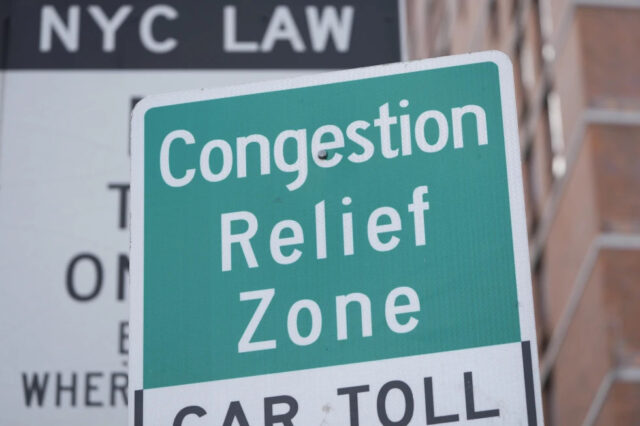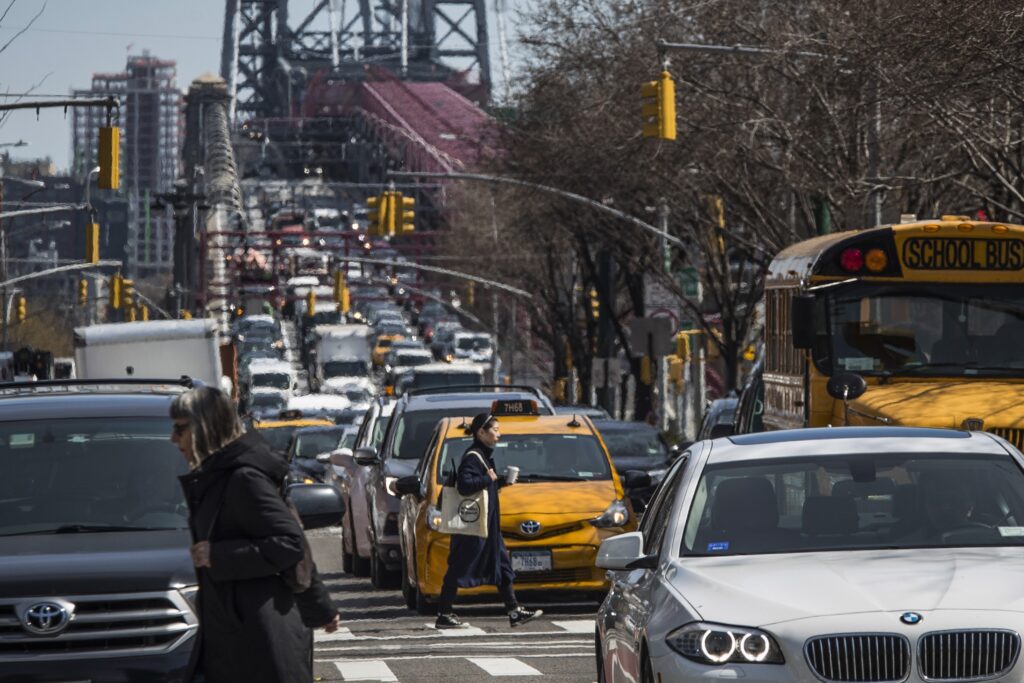
Despite mounting pressure from the Trump administration and a key Easter Sunday deadline, New York City’s landmark $9 congestion toll on drivers entering the busiest part of Manhattan remains fully in effect.
The toll, which targets vehicles entering Manhattan below Central Park, is the first of its kind in the United States. Initiated on January 5, the policy is designed to ease chronic traffic congestion while generating revenue to revitalize the city’s aging public transportation systems.
On Sunday, both Governor Kathy Hochul’s office and the Metropolitan Transportation Authority (MTA) confirmed the toll system was operating as usual.
“The cameras are staying on,” said Avi Small, a spokesperson for Governor Hochul, in a statement reaffirming the state’s commitment to the policy.
Trump-Era Pushback and Federal Resistance
The ongoing enforcement of the congestion fee comes in direct defiance of a directive from former President Donald Trump’s transportation secretary, Sean Duffy, who rescinded federal approval for the program in February. Duffy had originally given the MTA until March 21 to suspend the toll, a deadline later extended to April 20.
Duffy decried the toll as “a slap in the face to working class Americans and small business owners,” echoing Trump’s long-standing opposition. Trump has repeatedly slammed the initiative, which impacts properties like Trump Tower located within the congestion zone.
In response, the MTA filed a lawsuit in federal court challenging Duffy’s authority to reverse the program’s approval. The agency argues that the move is politically motivated and unsupported by legal or environmental review standards.
“In case there were any doubts, MTA, State, and City reaffirmed in a court filing that congestion pricing is here to stay,” said John J. McCarthy, MTA’s chief of policy and external relations. “The arguments Secretary Duffy made trying to stop it have zero merit.”
The U.S. Department of Transportation did not immediately respond to requests for comment on Sunday.
Congestion Pricing: A Work in Progress with Measurable Impact
Early data suggests the program is already having an impact. In March alone, an estimated 560,000 vehicles entered the congestion zone daily—down 13% from the projected 640,000 vehicles that would have crossed into the area without the toll.

In addition to reducing traffic, the program is expected to generate $500 million in 2025, which will be reinvested in subway, commuter rail, and bus system upgrades. The toll varies based on vehicle type and time of day and is applied in addition to existing tolls on bridges and tunnels into Manhattan.
Congestion pricing is not new to global cities. London and Stockholm have operated similar systems for years, with measurable success in curbing urban traffic and funding public transit.
Legal Challenges Dismissed
On Thursday, a Manhattan federal judge dismissed several lawsuits from local trucking companies and other groups opposing the toll. Plaintiffs argued the policy had bypassed environmental regulations and would unfairly impact specific industries and communities. The court ruled that the federal approvals were valid and found no requirement for a more expansive environmental impact study.
The Road Ahead
With lawsuits dismissed and the system already collecting fees, congestion pricing appears likely to remain a permanent fixture in Manhattan’s transportation landscape—regardless of Trump’s opposition or federal threats. Officials say further court rulings and policy refinements may follow, but for now, the toll cameras are rolling, and the cash is flowing.
As New York continues to lead the U.S. in urban transportation reform, eyes across the country are watching to see whether the Manhattan model might expand to other gridlocked cities.



